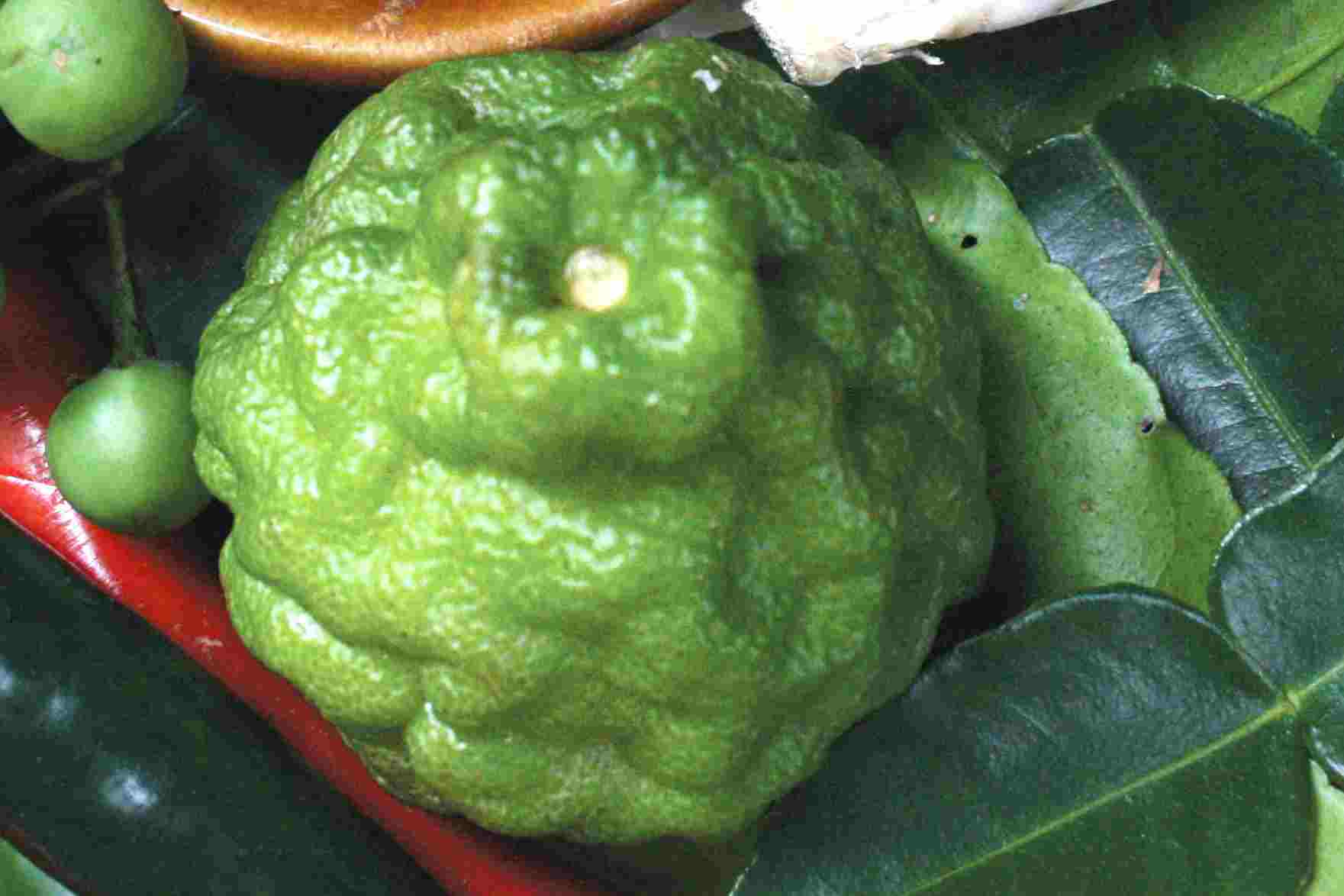
Kaffir lime is a type of lime native to Laos, Indonesia, Malaysia, and Thailand, commonly used in Southeast Asian cuisine, and widely grown worldwide as a backyard shrub. The kaffir lime is a rough, warty green fruit that grows on very thorny bush with aromatic and distinctively shaped "double" leaves. The word Kaffir have may come from German Kaefer, meaning bug. The leaves of the Kaffir Lime do bear a slight resemblance to an insect, especially the leaf insects native to Southeast Asia, with which they may have co-evolved.
Kaffir lime, also known as Makrut lime or Thai lime, is a type of citrus fruit that is native to Indonesia and Southeast Asia. It is an essential ingredient in many Southeast Asian cuisines, particularly Thai and Vietnamese. The fruit is small and bumpy with a greenish-yellow skin that is thicker than other lime varieties. Its unique flavor and aroma are derived from its essential oil, which is found in the fruit's leaves, zest, and peel.
Kaffir lime leaves are commonly used in curries, soups, and stews, as well as in marinades and sauces. They are also used to flavor rice and noodle dishes and are an essential ingredient in the famous Thai dish, Tom Yum soup. The leaves are delicate and should be added towards the end of cooking to preserve their flavor.
Apart from culinary uses, Kaffir lime also has medicinal properties. The essential oil extracted from the fruit has antibacterial, antifungal, and anti-inflammatory properties. It is used in aromatherapy to alleviate stress, anxiety, and depression, and to improve mental clarity and focus.
The oil is also used in skincare products due to its astringent and cleansing properties. It helps to unclog pores, remove dead skin cells, and prevent acne breakouts. In traditional medicine, Kaffir lime is used to treat various ailments such as fever, cough, cold, and sore throat.
Kaffir lime fruit is not as commonly used as its leaves, but it is still appreciated for its unique flavor. The juice is very acidic and sour, with a slightly bitter taste. It is used in marinades, salad dressings, and cocktails. The zest and peel are often used in baked goods and desserts, as well as in seasoning blends.
Kaffir lime is not widely cultivated outside its native range, but it is becoming more popular in other parts of the world, particularly in the United States and Europe. It can be found in specialty food stores and Asian markets, either fresh or dried. The dried leaves are a convenient alternative to fresh leaves and can be rehydrated before use.
Growing Kaffir lime trees can be a rewarding experience, but it requires a warm and humid climate. The trees grow best in tropical or subtropical regions and need plenty of sunlight and water. They can be grown from seeds or cuttings and are relatively easy to care for once established.
In addition to its culinary and medicinal uses, Kaffir lime also has cultural and spiritual significance in Southeast Asia. The fruit, leaves, and tree are often used in religious ceremonies and offerings, as well as in traditional medicine and folklore.
Kaffir lime has a complex and distinctive flavor that is difficult to describe. It is sour, bitter, and slightly sweet all at once, with a lemony and floral aroma. It adds a unique depth and complexity to dishes and can transform a simple meal into something special.
Kaffir lime is a versatile and essential ingredient in Southeast Asian cuisine. Its leaves are widely used in curries, soups, and stews, while its fruit and zest are used to add flavor to a variety of dishes. It also has medicinal and skincare properties and is used in aromatherapy and traditional medicine. Growing a Kaffir lime tree can be a satisfying experience, and the fruit has cultural and spiritual significance in Southeast Asia.